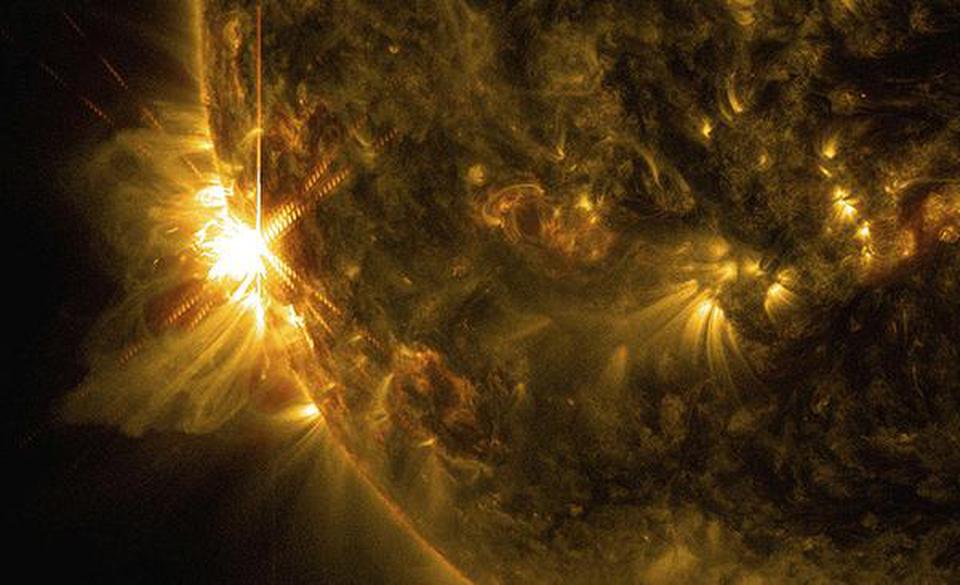
Superflares were million times stronger than solar flares
In 1962, a meteorite weighing 21 kg was found at Efremovka, now in Kazakhstan. By analysing a piece of this meteorite and studying the relative abundances of isotopes of lithium, beryllium and boron, two researchers have envisaged how the Sun behaved in its infancy. Then, they deduce, the Sun could let off superflares which were a million times stronger than the strongest recorded solar flare – the 1859 Carrington event. Such superflares must have taken place 4.5 billion years ago, when the Sun was barely forming. Further, they infer that irradiation by such superflares from the Sun is one of the sources of short-lived nuclides, for example, beryllium-7, which has a half-life of approximately 53.12 days.
First -formed solids
Among the first-formed solids of the solar system were the calcium aluminium-rich inclusions (CAI). The CAIs are nearly 4.567 billion years old. They become the refractory components within meteorites with irregular shape and are predominantly composed of oxides and silicates of calcium and aluminium. This study suggests that these were pushed to large distances measuring up to a few times the Earth-Sun distance (which is equal to one astronomical unit). These primordial solids were cooked by the superflares and moved to this distance in short times in the order of a year. “This study provides a quantum jump in understanding the activity and event and processes occurring in the early solar system and its protoplanetary disk,” says Kuljeet Kaur Marhas from Physical Research Laboratory, co-author of the paper which has been published online in Nature Astronomy.
Pristine meteorite
The Efremovka meteorite piece was lent to Professor J. N. Goswami, of Physical Research Laboratory, Ahmedabad, for scientific study. “Efremovka is one of the most pristine meteorites in our collections,” says Ritesh Kumar Mishra, the first author, who is at Ruprecht-Karls Heidelberg University. “Hence, there is a much greater probability of finding preserved isotopic records from the time of formation of the solar system, which is contemporaneous with the formation of CAIs,” he adds.
The first suggestion of irradiation by the Sun as a source of elements found in early solar system solids came from a study of the beryllium-10 radio nuclide in the Allende meteorite. Before this suggestion, it was believed that the only source of such elements was the contribution from ambient gas and dust. More recently, another hypothesis was added – namely that the beryllium-10 in CAIs could also arise core-collapse supernova from a low-mass star. Each of these possibilities would lead to different scenarios for the formation of the solar system. Since beryllium-10 has a very long half life of about 1.38 million years, it is possible that a part of it could have been created in any of the above processes.
Therefore, studying beryllium-10 does not clearly indicate which of the three hypotheses is correct.This work, on the other hand, studies both beryllium-7 decaying to lithium -7 and beryllium-10 decaying to boron-10. This short half life of beryllium-7 helps rule out the two competing theories and indicates that it is only irradiation by solar flares that led to the formation of the elements captured by the CAI. “To understand the activity of Sun further, we could look at recurrence of such events in various time scales and its effect on evaporating and recondensing solids in the early solar system,” says Dr. Marhas.